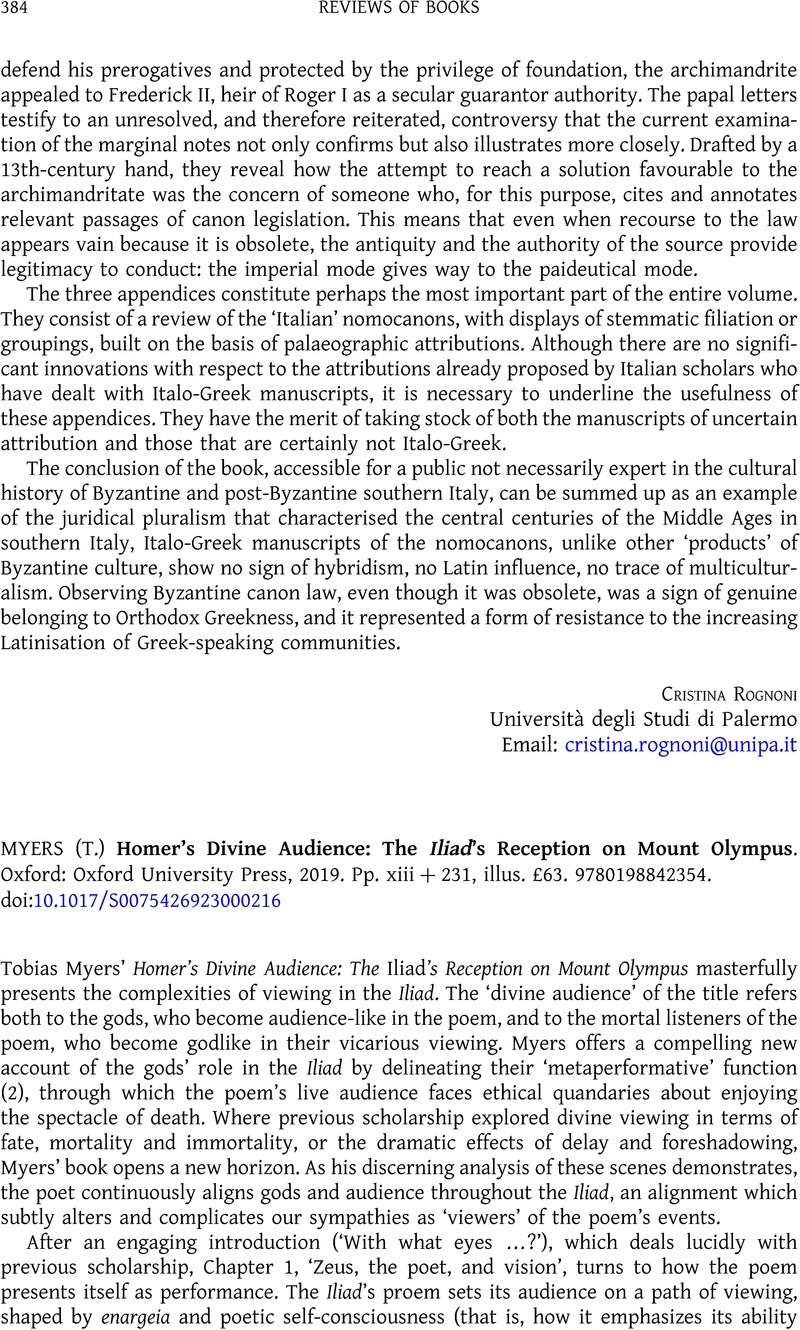No CrossRef data available.
Article contents
(T.) MYERS Homer’s Divine Audience: The Iliad’s Reception on Mount Olympus. Oxford: Oxford University Press, 2019. Pp. xiii + 231, illus. £63. 9780198842354.
Review products
(T.) MYERS Homer’s Divine Audience: The Iliad’s Reception on Mount Olympus. Oxford: Oxford University Press, 2019. Pp. xiii + 231, illus. £63. 9780198842354.
Part of:
Literature
Published online by Cambridge University Press: 25 April 2023
Abstract
An abstract is not available for this content so a preview has been provided. Please use the Get access link above for information on how to access this content.

- Type
- Reviews of Books
- Information
- Copyright
- © The Author(s), 2023. Published by Cambridge University Press on behalf of the Society for the Promotion of Hellenic Studies


